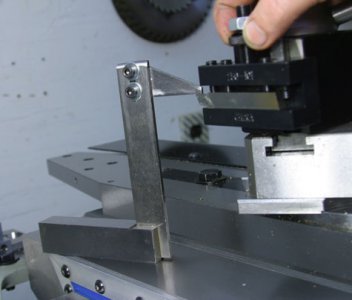Hi, all,
I run two Emco lathes--a Unimat 3 and a Compact 5. Each uses the same size QCTP and I only have a small number of tool holders, so I'm constantly resetting the height of tools from one to the other. Other than buying a whole bunch of tool holders and dedicating some to a particular machine, is there some easy trick to mark the just-below-center height on each lathe so I can easily realign the cutting height? (I hope I've stated this in a comprehensible fashion)
Ron Hofer
I run two Emco lathes--a Unimat 3 and a Compact 5. Each uses the same size QCTP and I only have a small number of tool holders, so I'm constantly resetting the height of tools from one to the other. Other than buying a whole bunch of tool holders and dedicating some to a particular machine, is there some easy trick to mark the just-below-center height on each lathe so I can easily realign the cutting height? (I hope I've stated this in a comprehensible fashion)
Ron Hofer


